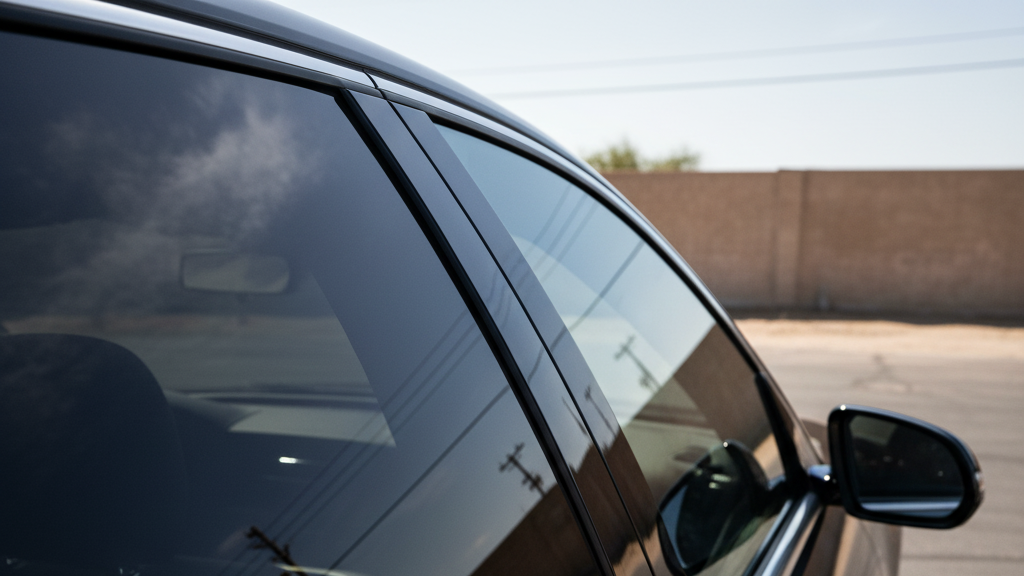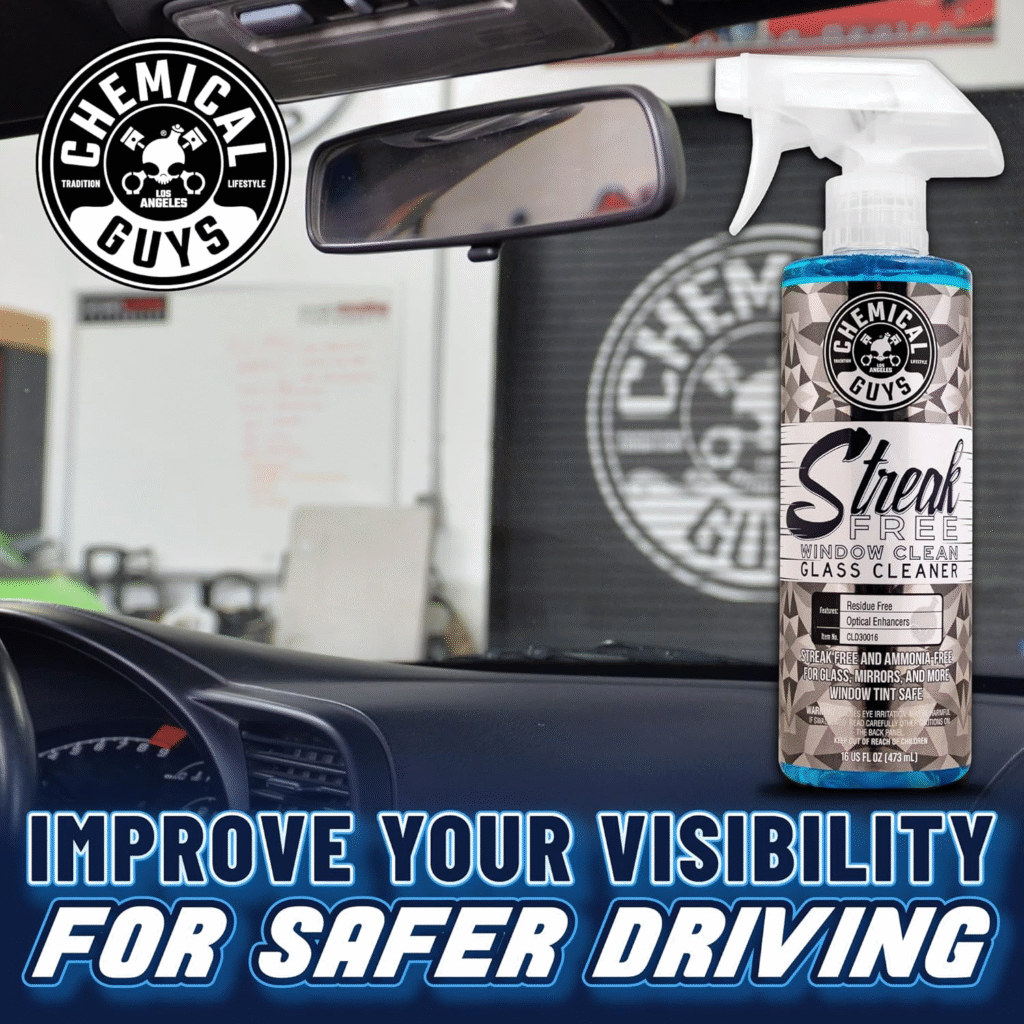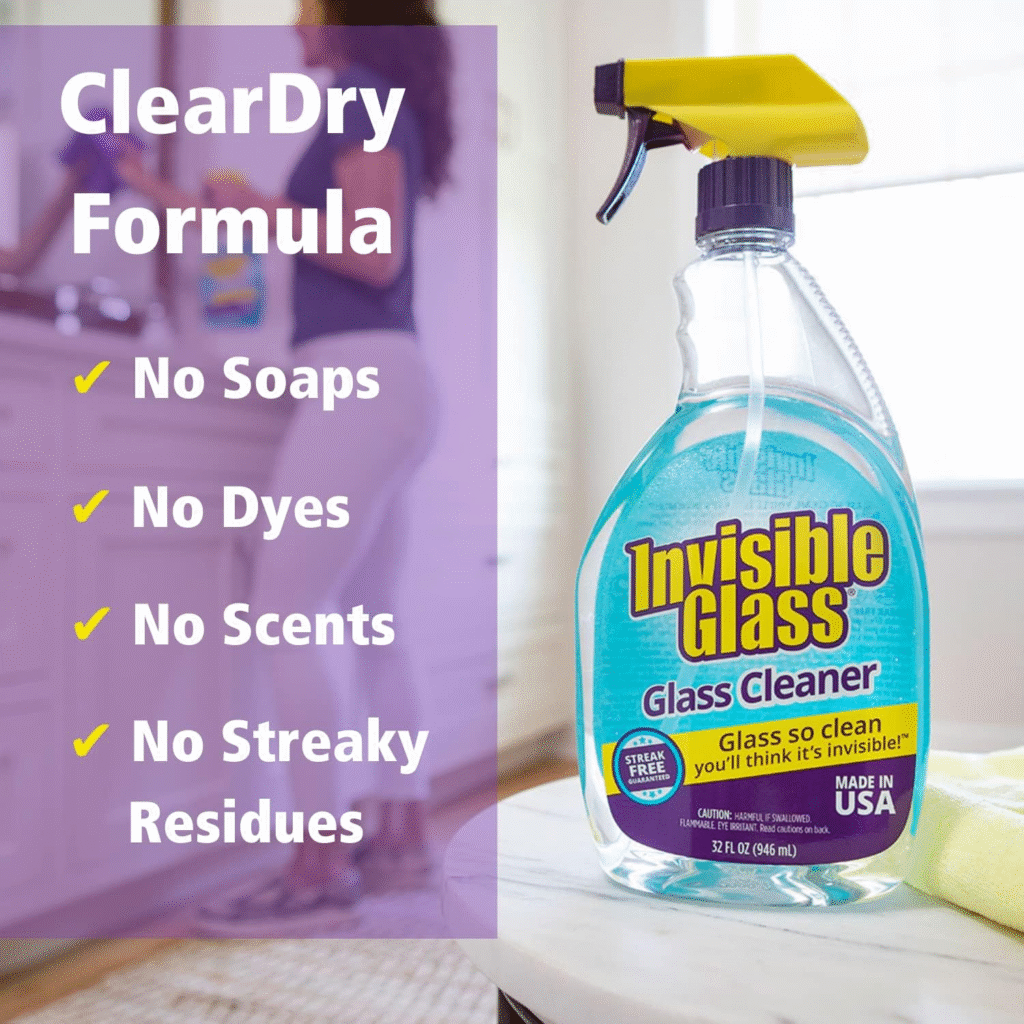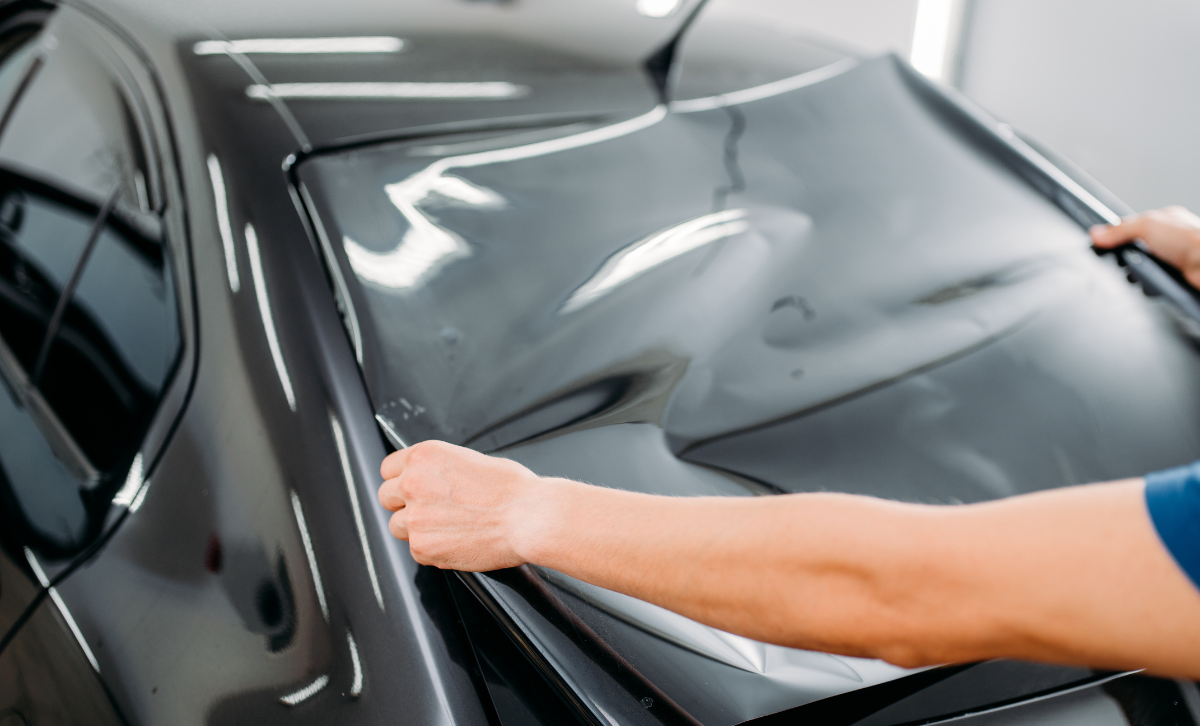Ceramic Tint vs Regular Tint: Know the Differences
Ceramic tint vs regular tint comes down to more than just price—it’s about how much heat, UV, and infrared light you’re willing to let into your car.
Most people aren’t aware there is a big difference in the options.
While regular window film might be easier on the wallet, ceramic tint is the gold standard for performance, durability, and comfort. Here’s aa simple ceramic tint vs regular tint breakdown with the key differences and why the extra price is worth the upgrade.
1. Heat Rejection: Ceramic Dominates

Ceramic Tint
Ceramic films are infused with nano-ceramic particles that block up to 99% of UV rays and over 80% of infrared (IR) heat. This significantly reduces the interior temperature of your vehicle, making your drive cooler and more comfortable—even on blazing summer days.
Regular Film Tint
Dyed tints and metallic films may reduce some visible light and UV, but they’re far less effective at blocking infrared heat. Expect higher cabin temperatures and more strain on your AC system.
✅ Winner: Ceramic
It delivers superior heat rejection without darkening your windows excessively.
2. Signal Interference: Only Ceramic Plays Nice with Tech
Ceramic Tint
Ceramic is a non-metallic material, which means zero interference with GPS, satellite radio, cell service, or Bluetooth.
Metallic Film Tint
Metallic tints can disrupt electronic signals, causing annoying dead zones for navigation, music streaming, or hands-free calling.
✅Winner: Ceramic
Ceramic tint keeps your tech working flawlessly.
3. UV Protection and Skin Safety
Ceramic Tint
Blocks up to 99% of harmful UV rays, protecting your skin, dashboard, and upholstery from sun damage and fading.
Regular Film Tint
Dyed films may offer some UV protection, but they typically deteriorate faster over time and may not maintain full UV blocking capabilities.
✅ Winner: Ceramic
For long-term skin and interior protection, ceramic is the clear choice.
4. Clarity and Aesthetics
Ceramic Tint
Delivers a crisp, non-reflective look with excellent visibility both day and night. Even with high heat rejection, ceramic films maintain a neutral, factory-finish style that enhances vehicle appearance.
Regular Film Tint
Dyed films may appear blurry, hazy, or overly dark, especially as they fade over time. Metallic films can look too shiny or mirrored for some tastes.
✅ Winner: Ceramic — A clean, modern aesthetic with optimal visibility.
5. Longevity and Fade Resistance
Ceramic Tint
Built to last. Ceramic films don’t fade, bubble, or turn purple like cheap dyed films. With proper installation, they can last up to 10 years or more.
Regular Film Tint
Often starts to degrade after just a few summers—especially cheaper dyed films which are prone to discoloration and peeling.
✅ Winner: Ceramic — Long-term value without the maintenance headaches.
Final Verdict: Is Ceramic Tint Worth It?
Absolutely. While ceramic tint might cost a bit more upfront, its superior heat rejection, UV protection, durability, and signal clarity make it a smart investment—especially if you live in a sunny climate or care about preserving your vehicle’s interior.
If you’re ready to upgrade, check out some of the best-selling ceramic tint kits on Amazon below:
1. Chemical Guys Streak-Free Window Clean (Safe for Tinted Windows)

A trusted favorite, this ammonia-free glass cleaner is safe for all tinted windows, including ceramic films.
- No streaks or residue
- Spray-and-wipe formula
- Won’t degrade or discolor window film
- Great for regular cleaning without damaging the tint.
2. Invisible Glass Cleaner (Tint-Safe)

A dual-action product that cleans glass and adds water repellency, all while being safe for tinted surfaces.
Ideal for maintaining clarity and hydrophobicity.
Cuts down grime and oil buildup
- Won’t interfere with ceramic film adhesion
3. Meguiar’s Perfect Clarity Glass Cleaner (Ammonia-Free)

- Professional-grade clarity and a fast-drying formula that’s safe for all tint types, including ceramic.
- Trusted by detailers and easy to use at home.
Key Takeaways
Ceramic tint vs regular tint is a game-changer when you’re looking for maximum heat rejection and UV protection without compromising visibility. Also, ceramic tint isn’t just for luxury car owners anymore. It’s for anyone who wants the best protection and performance for their vehicle. While regular tints may get the job done temporarily, ceramic is a long-term solution that truly delivers value.
Whether you’re shielding your kids from UV rays, improving your ride’s resale value, or just keeping your car cool and connected, ceramic film is the upgrade that pays for itself.



2 Comments